Premium Only Content
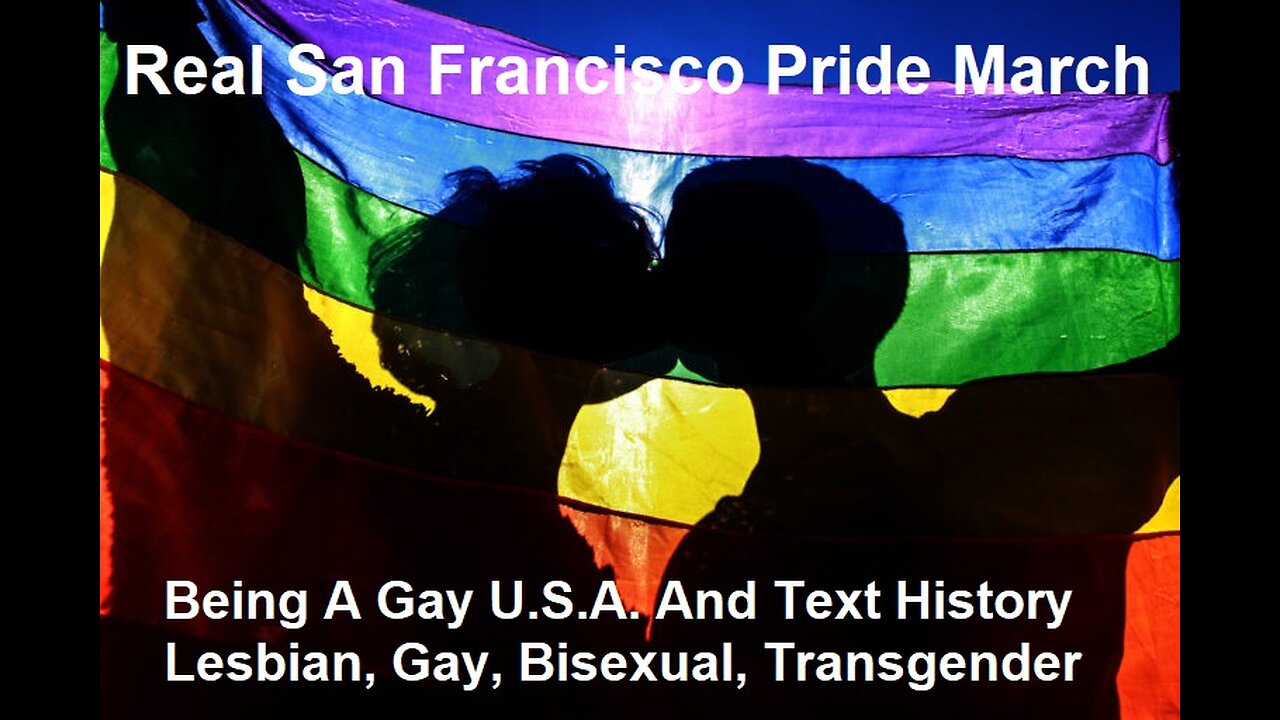
Being Gay In The U.S.A. And Text History Of Lesbian, Gay, Bisexual, And Transgender
Gay USA captures a moment of queer history, of gay pride parades in the 1970s. Here there is power in numbers, as people are free to be themselves. These people are brave, as some have suffered violence, lost jobs, and been abandoned by family. Gay USA is a document of history, being a reflection of an era and all the differing opinions.
A brief history of lesbian, gay, bisexual, and transgender social movements Social movements, organizing around the acceptance and rights of persons who might today identify as LGBT or queer, began as responses to centuries of persecution by church, state, and medical authorities. Where homosexual activity or deviance from established gender roles/dress was banned by law or traditional custom, such condemnation might be communicated through sensational public trials, exile, medical warnings, and language from the pulpit. These paths of persecution entrenched homophobia for centuries—but also alerted entire populations to the existence of difference.
Whether an individual recognized they, too, shared this identity and were at risk, or dared to speak out for tolerance and change, there were few organizations or resources before the scientific and political revolutions of the 18th and 19th centuries. Gradually, the growth of a public media and ideals of human rights drew together activists from all walks of life, who drew courage from sympathetic medical studies, banned literature, emerging sex research, and a climate of greater democracy.
By the 20th century, a movement in recognition of gays and lesbians was underway, abetted by the social climate of feminism and new anthropologies of difference. However, throughout 150 years of homosexual social movements (roughly from the 1870s to today), leaders and organizers struggled to address the very different concerns and identity issues of gay men, women identifying as lesbians, and others identifying as gender variant or nonbinary. White, male, and Western activists whose groups and theories gained leverage against homophobia did not necessarily represent the range of racial, class, and national identities complicating a broader LGBT agenda. Women were often left out altogether.
What is the prehistory of LGBT activism? Most historians agree that there is evidence of homosexual activity and same-sex love, whether such relationships were accepted or persecuted, in every documented culture. We know that homosexuality existed in ancient Israel simply because it is prohibited in the Bible, whereas it flourished between both men and women in Ancient Greece. Substantial evidence also exists for individuals who lived at least part of their lives as a different gender than assigned at birth. From the lyrics of same-sex desire inscribed by Sappho in the seventh century BCE to youths raised as the opposite sex in cultures ranging from Albania to Afghanistan; from the “female husbands” of Kenya to the Native American “Two-Spirit,” alternatives to the Western male-female and heterosexual binaries thrived across millennia and culture.
These realities gradually became known to the West via travelers’ diaries, the church records of missionaries, diplomats’ journals, and in reports by medical anthropologists. Such eyewitness accounts in the era before other media were of course riddled with the biases of the (often) Western or White observer, and added to beliefs that homosexual practices were other, foreign, savage, a medical issue, or evidence of a lower racial hierarchy. The peaceful flowering of early trans or bisexual acceptance in different indigenous civilizations met with opposition from European and Christian colonizers.
In the age of European exploration and empire-building, Native American, North African, and Pacific Islander cultures accepting of “Two-Spirit” people or same-sex love shocked European invaders who objected to any deviation from a limited understanding of “masculine” and “feminine” roles. The European powers enforced their own criminal codes against what was called sodomy in the New World: the first known case of homosexual activity receiving a death sentence in North America occurred in 1566, when the Spanish executed a Frenchman in Florida.
Against the emerging backdrop of national power and Christian faith, what might have been learned about same-sex love or gender identity was buried in scandal. Ironically, both wartime conflict between emerging nations and the departure or deaths of male soldiers left women behind to live together and fostered strong alliances between men as well. Same-sex companionship thrived where it was frowned upon for unmarried, unrelated males and females to mingle or socialize freely. Women’s relationships in particular escaped scrutiny since there was no threat of pregnancy. Nonetheless, in much of the world, female sexual activity and sensation were curtailed wherever genital circumcision practices made clitoridectomy an ongoing custom.
Where European dress—a clear marker of gender—was enforced by missionaries, we find another complicated history of both gender identity and resistance. Biblical interpretation made it illegal for a woman to wear pants or a man to adopt female dress, and sensationalized public trials warned against “deviants” but also made such martyrs and heroes popular: Joan of Arc is one example, and the chilling origins of the word “faggot” include a stick of wood used in public burnings of gay men.
Despite the risks of defying severe legal codes, cross-dressing flourished in early modern Europe and America. Women and girls, economically oppressed by the sexism which kept them from jobs and economic/education opportunities designated for men only, might pass as male in order to gain access to coveted experiences or income. This was a choice made by many women who were not necessarily transgender in identity. Women “disguised” themselves as men, sometimes for extended periods of years, in order to fight in the military (Deborah Sampson), to work as pirates (Mary Read and Anne Bonney), attend medical school, etc. Both men and women who lived as a different gender were often only discovered after their deaths, as the extreme differences in male vs. female clothing and grooming in much of Western culture made “passing” surprisingly easy in certain environments.
Moreover, roles in the arts where women were banned from working required that men be recruited to play female roles, often creating a high-status, competitive market for those we might today identify as trans women, in venues from Shakespeare’s theatre to Japanese Kabuki to the Chinese opera. This acceptance of performance artists, and the popularity of “drag” humor cross-culturally, did not necessarily mark the start of transgender advocacy, but made the arts an often accepting sanctuary for LGBT individuals who built theatrical careers based around disguise and illusion.
The era of sexology studies is where we first see a small, privileged cluster of medical authorities begin promoting a limited tolerance of those born “invert.” In Western history, we find little formal study of what was later called homosexuality before the 19th century, beyond medical texts identifying women with large clitorises as “tribades” and severe punishment codes for male homosexual acts.
Early efforts to understand the range of human sexual behavior came from European doctors and scientists including Carl von Westphal (1869), Richard von Krafft-Ebing (1882) and Havelock Ellis (1897). Their writings were sympathetic to the concept of a homosexual or bisexual orientation occurring naturally in an identifiable segment of humankind, but the writings of Krafft-Ebing and Ellis also labeled a “third sex” degenerate and abnormal. Sigmund Freud, writing in the same era, did not consider homosexuality an illness or a crime and believed bisexuality to be an innate aspect beginning with undetermined gender development in the womb. Yet Freud also felt that lesbian desires were an immaturity women could overcome through heterosexual marriage and male dominance.
These writings gradually trickled down to a curious public through magazines and presentations, reaching men and women desperate to learn more about those like themselves, including some like English writer Radclyffe Hall who willingly accepted the idea of being a “congenital invert.” German researcher Magnus Hirschfeld went on to gather a broader range of information by founding Berlin’s Institute for Sexual Science, Europe’s best library archive of materials on gay cultural history. His efforts, and Germany’s more liberal laws and thriving gay bar scene between the two World Wars, contrasted with the backlash, in England, against gay and lesbian writers such as Oscar Wilde and Radclyffe Hall. With the rise of Hitler’s Third Reich, however, the former tolerance demonstrated by Germany’s Scientific Humanitarian Committee vanished. Hirschfeld’s great library was destroyed and the books burnt by Nazis on May 10, 1933.
In the United States, there were few attempts to create advocacy groups supporting gay and lesbian relationships until after World War II. However, prewar gay life flourished in urban centers such as New York’s Greenwich Village and Harlem during the Harlem Renaissance of the 1920s. The blues music of African-American women showcased varieties of lesbian desire, struggle, and humor; these performances, along with male and female drag stars, introduced a gay underworld to straight patrons during Prohibition’s defiance of race and sex codes in speakeasy clubs.
The disruptions of World War II allowed formerly isolated gay men and women to meet as soldiers and war workers; and other volunteers were uprooted from small towns and posted worldwide. Many minds were opened by wartime, during which LGBT people were both tolerated in military service and officially sentenced to death camps in the Holocaust. This increasing awareness of an existing and vulnerable population, coupled with Senator Joseph McCarthy’s investigation of homosexuals holding government jobs during the early 1950s outraged writers and federal employees whose own lives were shown to be second-class under the law, including Frank Kameny, Barbara Gittings, Allen Ginsberg, and Harry Hay.
Awareness of a burgeoning civil rights movement (Martin Luther King’s key organizer Bayard Rustin was a gay man) led to the first American-based political demands for fair treatment of gays and lesbians in mental health, public policy, and employment. Studies such as Alfred Kinsey’s 1947 Kinsey Report suggested a far greater range of homosexual identities and behaviors than previously understood, with Kinsey creating a “scale” or spectrum ranging from complete heterosexual to complete homosexual.
The primary organization for gay men as an oppressed cultural minority was the Mattachine Society, founded in 1950 by Harry Hay and Chuck Rowland. Other important homophile organizations on the West Coast included One, Inc., founded in 1952, and the first lesbian support network Daughters of Bilitis, founded in 1955 by Phyllis Lyon and Del Martin. Through meetings and publications, these groups offered information and outreach to thousands.
These first organizations soon found support from prominent sociologists and psychologists. In 1951, Donald Webster Cory published “The Homosexual in America,” asserting that gay men and lesbians were a legitimate minority group, and in 1953 Evelyn Hooker, PhD, won a grant from the National Institute of Mental Health to study gay men. Her groundbreaking paper, presented in 1956, demonstrated that gay men were as well-adjusted as heterosexual men, often more so.
But it would not be until 1973 that the American Psychiatric Association removed homosexuality as an “illness” classification in its diagnostic manual. Throughout the 1950s and 60s, gay men and lesbians continued to be at risk for psychiatric lockup as well as jail, losing jobs, and/or child custody when courts and clinics defined gay love as sick, criminal, or immoral.
In 1965, as the civil rights movement won new legislation outlawing racial discrimination, the first gay rights demonstrations took place in Philadelphia and Washington, D.C., led by longtime activists Frank Kameny and Barbara Gittings. The turning point for gay liberation came on June 28, 1969, when patrons of the popular Stonewall Inn in New York’s Greenwich Village fought back against ongoing police raids of their neighborhood bar. Stonewall is still considered a watershed moment of gay pride and has been commemorated since the 1970s with “pride marches” held every June across the United States. Recent scholarship has called for better acknowledgment of the roles that drag performers, people of color, bisexuals, and transgender patrons played in the Stonewall Riots.
The gay liberation movement of the 1970s saw myriad political organizations spring up, often at odds with one another. Frustrated with the male leadership of most gay liberation groups, lesbians influenced by the feminist movement of the 1970s formed their own collectives, record labels, music festivals, newspapers, bookstores, and publishing houses, and called for lesbian rights in mainstream feminist groups like the National Organization for Women. Gatherings such as women’s music concerts, bookstore readings, and lesbian festivals well beyond the United States were extraordinarily successful in organizing women to become activists; the feminist movement against domestic violence also assisted women to leave abusive marriages, while retaining custody of children became a paramount issue for lesbian mothers.
Expanding religious acceptance for gay men and women of faith, the first out gay minister was ordained by the United Church of Christ in 1972. Other gay and lesbian church and synagogue congregations soon followed. Parents and Friends of Lesbians and Gays (PFLAG), formed in 1972, offered family members greater support roles in the gay rights movement. And political action exploded through the National Gay and Lesbian Task Force, the Human Rights Campaign, the election of openly gay and lesbian representatives like Elaine Noble and Barney Frank, and, in 1979, the first march on Washington for gay rights.
The increasing expansion of a global LGBT rights movement suffered a setback during the 1980s, as the gay male community was decimated by the AIDS epidemic, demands for compassion and medical funding led to renewed coalitions between men and women as well as angry street theatre by groups like AIDS Coalition to Unleash Power (ACT UP) and Queer Nation. Enormous marches on Washington drew as many as one million gay rights supporters in 1987 and again in 1993. Right-wing religious movements, spurred on by beliefs that AIDS was God’s punishment, expanded via direct mail. A New Right coalition of political lobby groups competed with national LGBT organizations in Washington, seeking to create religious exemptions from any new LGBT rights protections.
In the same era, one wing of the political gay movement called for an end to military expulsion of gay, lesbian, and bisexual soldiers, with the high-profile case of Colonel Margarethe Cammermeyer publicized through a made-for-television movie, “Serving in Silence.” In spite of the patriotism and service of gay men and lesbians in uniform, the uncomfortable and unjust compromise “Don’t Ask, Don’t Tell” emerged as an alternative to decades of military witch hunts and dishonorable discharges. Yet more service members ended up being discharged under Don’t Ask, Don’t Tell.
During the last decade of the 20th century, millions of Americans watched as actress Ellen DeGeneres came out on national television in April 1997, heralding a new era of gay celebrity power and media visibility—although not without risks. Celebrity performers, both gay and heterosexual, continued to be among the most vocal activists calling for tolerance and equal rights. With greater media attention to gay and lesbian civil rights in the 1990s, trans and intersex voices began to gain space through works such as Kate Boernstein’s “Gender Outlaw” (1994) and “My Gender Workbook” (1998), Ann Fausto-Sterling’s “Myths of Gender” (1992) and Leslie Feinberg’s “Transgender Warriors” (1998), enhancing shifts in women’s and gender studies to become more inclusive of transgender and nonbinary identities.
As a result of hard work by countless organizations and individuals, helped by internet and direct-mail campaign networking, the 21st century heralded new legal gains for gay and lesbian couples. Same-sex civil unions were recognized under Vermont law in 2000, and Massachusetts became the first state to perform same-sex marriages in 2004; with the end of state sodomy laws (Lawrence v. Texas, 2003), gay and lesbian Americans were finally free from criminal classification. Gay marriage was first legal in the Netherlands, Belgium, Spain, and Canada; but the recognition of gay marriage by church and state continued to divide opinion worldwide. After the impressive gains for LGBT rights in postapartheid South Africa, conservative evangelicals in the U.S. began providing support and funding for homophobic campaigns overseas. Uganda’s dramatic death penalty for gays and lesbians was perhaps the most severe in Africa.
The first part of the 21st century saw new emphasis on transgender activism and the increasing usage of terminology that questioned binary gender identification. Images of trans women became more prevalent in film and television, as did programming with same-sex couples raising children. Transphobia, cissexism, and other language (such as “hir” and “them”) became standardized, and film and television programming featured more openly trans youth and adult characters. Tensions between lesbian and trans activists, however, remained, with the long-running Michigan Womyn’s Music Festival boycotted by national LGBT groups over the issue of trans inclusion; like many woman-only events with a primarily lesbian base, Michfest had supported an ideal of ingathering women and girls born female. The festival ended after its 40th anniversary in August 2015.
Internet activism burgeoned, while many of the public, physical gathering spaces that once defined LGBT activism (bars, bookstores, women’s music festivals) began to vanish, and the usage of “queer” replaced lesbian identification for many younger women activists. Attention shifted to global activism as U.S. gains were not matched by similar equal rights laws in the 75 other countries where homosexuality remained illegal. As of 2016, LGBT identification and activism was still punishable by death in 10 countries: Iran, Iraq, Mauritania, Nigeria, Qatar, Saudi Arabia, Somalia, Sudan, Uganda, and Yemen; the plight of the LGBT community in Russia received intense focus during the 2014 Winter Olympic Games, to which President Obama sent a contingent of out LGBT athletes. Supportive remarks from the new Pope Francis (“Who am I to judge?”) gave hope to LGBT Catholics worldwide.
Perhaps the greatest changes in the U.S. occurred between spring 2015 and spring 2016: in late spring 2015 Alison Bechdel’s lesbian-themed Broadway production Fun Home won several Tony awards, former Olympic champion Bruce Jenner transitioned to Caitlyn Jenner, and then in June of 2015, the Supreme Court decision recognized same-sex marriage (Obergefell v. Hodges). By spring 2016 the Academy Awards recognized films with both lesbian and transgender themes: Carol and The Danish Girl. And the Supreme Court had avowed that a lesbian family adoption in one state had to be recognized in all states.
However, the United States also saw intense racial profiling confrontations and tragedies in this same period, turning LGBT activism to “intersectionality,” or recognition of intersections issues of race, class, gender identity, and sexism. With the June 12, 2016, attacks on the Pulse nightclub in Orlando, that intersectionality was made plain as straight allies held vigils grieving the loss of young Latino drag queens and lesbians of color; with unanswered questions about the killer’s possible identification with ISIS terrorism, other voices now call for alliances between the LGBT and Muslim communities, and the greater recognition of perspectives from those who are both Muslim and LGBT in the U.S. and beyond. The possible repression of identity which may have played a role in the killer’s choice of target has generated new attention to the price of homophobia—internalized, or culturally expressed—in and beyond the United States.
What the 'Q' in LGBTQ stands for, and other identity terms explained.
Have you ever wondered what the "Q" in LGBTQ stands for? Or what the other letters mean? Just as language constantly evolves, the words we use to describe ourselves and other facets of identity are changing, too. Here are some terms you should be familiar with, based on resources from the American Psychological Association; NLGJA: The Association of LGBTQ Journalists; National Center for Transgender Equality. After you read them, test your knowledge using the memory game below.
LGBTQ: The first four letters of this standard abbreviation are fairly straightforward: “Lesbian, gay, bisexual and transgender.” The Q can stand for “questioning” -- as in still exploring one’s sexuality -- or “queer,” or sometimes both.
QUEER: Once considered a demeaning slur for being gay, “queer” is being reclaimed by some as a self-affirming umbrella term, especially among those who consider other labels restrictive. Some still believe it’s a homophobic slur, so it’s always best to ask or wait for the person whom you’re speaking with to use it.
SEX: The scientific community views sex as different from gender. Sex is assigned at birth based on a newborn’s physical and biological characteristics, such as chromosomes, hormone prevalence and anatomy. Generally, a newborn’s sex is assigned male or female, though some states and countries provide a third option for those who are intersex.
INTERSEX: People born with sex chromosomes, external genitalia or an internal reproductive system that is not considered standard for males or females. Parents and physicians usually choose the sex of the child, resulting in surgery or hormone treatment. Some intersex adults want this practice to end because one’s sex at birth may not align with their own sense of gender or identity.
GENDER: The socially constructed roles, behaviors and attributes that serve as cultural indicators of someone’s personal and social identity. Typically, these roles are grouped into one of two categories: male or female. That’s starting to change, as society grows more comfortable with the idea of gender as a spectrum and not binary.
GENDER IDENTITY: A person’s emotional and psychological sense of their gender, which may not align with the sex they were assigned at birth. The most common examples of gender identity are male and female, but there are several terms for people who don’t fit into those categories, such as the following…
NON-BINARY: One of the more common terms to describe people who don’t identify as male or female. Some may have a gender that blends male and female elements, or they may not identify with any gender. Common synonyms or alternatives to non-binary terms include genderqueer and gender nonconforming.
TRANSGENDER: Unlike non-binary people, transgender people may identify as male or female. What the two groups share is the innate sense that their gender identity does not match the sex they were assigned at birth.
CISGENDER: The prefix “cis” means “on this side.” Adding it to the suffix “gender” creates a word for someone whose gender identity aligns with the sex they were assigned at birth. In other words, someone who does not identify as transgender.
SEXUAL ORIENTATION: One’s innate sexual attraction to other men, women or others who identify as non-binary. Not to be confused with gender, sex or gender identity.
LESBIAN: A noun and an adjective for women who are attracted to other women, although some women prefer to be called gay or queer – it’s always best to ask!
GAY: An adjective and not a noun, most often used to describe men who are attracted to other men (except in the aforementioned cases).
BISEXUAL: Someone who is attracted to more than one gender.
ASEXUAL: Asexuality is a sexual orientation characterized by a lack of sexual attraction, but it doesn’t rule out romantic attraction.
PANSEXUAL: The prefix “pan” says it all. Pansexual is an adjective for those who are attracted to all types of people, regardless of their gender or sexual orientation.
Milestones in the American Gay Rights Movement.
December 10, 1924
The Society for Human Rights is founded by Henry Gerber in Chicago. The society is the first gay rights organization as well as the oldest documented in America. After receiving a charter from the state of Illinois, the society publishes the first American publication for homosexuals, Friendship and Freedom. Soon after its founding, the society disbands due to political pressure.
1948
Biologist and sex researcher Alfred Kinsey publishes Sexual Behavior in the Human Male. From his research Kinsey concludes that homosexual behavior is not restricted to people who identify themselves as homosexual and that 37% of men have enjoyed homosexual activities at least once. While psychologists and psychiatrists in the 1940s consider homosexuality a form of illness, the findings surprise many conservative notions about sexuality.
November 11, 1950
In Los Angeles, gay rights activist Harry Hay founds America’s first sustained national gay rights organization. In an attempt to change public perception of homosexuality, the Mattachine Society aims to "eliminate discrimination, derision, prejudice and bigotry," to assimilate homosexuals into mainstream society, and to cultivate the notion of an "ethical homosexual culture."
December 15, 1950
A Senate report titled "Employment of Homosexuals and Other Sex Perverts in Government" is distributed to members of Congress after the federal government had covertly investigated employees' sexual orientation at the beginning of the Cold War. The report states since homosexuality is a mental illness, homosexuals "constitute security risks" to the nation because "those who engage in overt acts of perversion lack the emotional stability of normal persons."
Over the previous few years, more than 4,380 gay men and women had been discharged from the military and around 500 fired from their jobs with the government. The purging will become known as the "lavender scare."
April, 1952
The American Psychiatric Association lists homosexuality as a sociopathic personality disturbance in its first publication of the Diagnostic and Statistical Manual of Mental Disorders. Immediately following the manual's release, many professionals in medicine, mental health and social sciences criticize the categorization due to lack of empirical and scientific data.
April 27, 1953
President Dwight Eisenhower signs Executive Order 10450, banning homosexuals from working for the federal government or any of its private contractors. The Order lists homosexuals as security risks, along with alcoholics and neurotics.
September 21, 1955
In San Francisco, the Daughters of Bilitis becomes the first lesbian rights organization in the United States. The organization hosts social functions, providing alternatives to lesbian bars and clubs, which are frequently raided by police.
August 30, 1956
American psychologist Evelyn Hooker shares her paper "The Adjustment of the Male Overt Homosexual" at the American Psychological Association Convention in Chicago. After administering psychological tests, such as the Rorschach, to groups of homosexual and heterosexual males, Hooker's research concludes homosexuality is not a clinical entity and that heterosexuals and homosexuals do not differ significantly. Hooker's experiment becomes very influential, changing clinical perceptions of homosexuality.
January 13, 1958
In the landmark case One, Inc. v. Olesen, the United States Supreme Court rules in favor of the First Amendment rights of the lesbian, gay, bisexual and transgender (LGBT) magazine "One: The Homosexual Magazine." The suit was filed after the U.S. Postal Service and FBI declared the magazine obscene material, and it marks the first time the United States Supreme Court rules in favor of homosexuals.
January 1, 1962
Illinois repeals its sodomy laws, becoming the first U.S. state to decriminalize homosexuality.
July 4, 1965
At Independence Hall in Philadelphia, picketers begin staging the first Reminder Day to call public attention to the lack of civil rights for LGBT people. The gatherings will continue annually for five years.
April 21, 1966
Members of the Mattachine Society stage a "sip-in" at the Julius Bar in Greenwich Village, where the New York Liquor Authority prohibits serving gay patrons in bars on the basis that homosexuals are "disorderly." Society president Dick Leitsch and other members announce their homosexuality and are immediately refused service.
Following the sip-in, the Mattachine Society will sue the New York Liquor Authority. Although no laws are overturned, the New York City Commission on Human Rights declares that homosexuals have the right to be served.
August, 1966
After transgender customers become raucous in a 24-hour San Francisco cafeteria, management calls police. When a police officer manhandles one of the patrons, she throws coffee in his face and a riot ensues, eventually spilling out onto the street, destroying police and public property.
Following the riot, activists established the National Transsexual Counseling Unit, the first peer-run support and advocacy organization in the world.
June 28, 1969
Patrons of the Stonewall Inn in Greenwich Village riot when police officers attempt to raid the popular gay bar around 1am. Since its establishment in 1967, the bar had been frequently raided by police officers trying to clean up the neighborhood of "sexual deviants."
Angry gay youth clash with aggressive police officers in the streets, leading to a three-day riot during which thousands of protestors receive only minimal local news coverage. Nonetheless, the event will be credited with reigniting the fire behind America's modern LGBT rights movement.
June 28, 1970
Christopher St. Liberation Day commemorates the one-year anniversary of the Stonewall riots. Following the event, thousands of members of the LGBT community march through New York into Central Park, in what will be considered America's first gay pride parade.
In the coming decades, the annual gay pride parade will spread to dozens of countries around the world.
December 15, 1973
The board of the American Psychiatric Association votes to remove homosexuality from its list of mental illnesses.
January, 1974
Kathy Kozachenko becomes the first openly gay American elected to public office when she wins a seat on the Ann Arbor, Michigan City Council.
June 7, 1977
Singer and conservative Southern Baptist Anita Bryant leads a successful campaign with the "Save Our Children" Crusade to repeal a gay rights ordinance in Dade County, Florida. Bryant faces severe backlash from gay rights supporters across the U.S. The gay rights ordinance will not be reinstated in Dade County until December 1, 1998, more than 20 years later.
November 8, 1977
Harvey Milk wins a seat on the San Francisco Board of Supervisors and is responsible for introducing a gay rights ordinance protecting gays and lesbians from being fired from their jobs. Milk also leads a successful campaign against Proposition 6, an initiative forbidding homosexual teachers.
A year later, on November 27, 1978, former city supervisor Dan White assassinates Milk. White's actions are motivated by jealousy and depression, rather than homophobia.
May 21, 1979
Dan White is convicted of voluntary manslaughter and is sentenced to seven years in prison. Outraged by what they believed to be a lenient sentence, more than 5,000 protesters ransack San Francisco's City Hall, doing hundreds of thousands of dollars worth of property damage in the surrounding area.
The following night, approximately 10,000 people gather on San Francisco's Castro and Market streets for a peaceful demonstration to commemorate what would have been Milk's 49th birthday.
October 14, 1979
An estimated 75,000 people participate in the National March on Washington for Lesbian and Gay Rights. LGBT people and straight allies demand equal civil rights and urge for the passage of protective civil rights legislature.
July 8, 1980
The Democratic Rules Committee states that it will not discriminate against homosexuals. At their National Convention on August 11-14, the Democrats become the first major political party to endorse a homosexual rights platform.
July 3, 1981
The New York Times prints the first story of a rare pneumonia and skin cancer found in 41 gay men in New York and California. The CDC initially refers to the disease as GRID, Gay Related Immune Deficiency Disorder.
When the symptoms are found outside the gay community, Bruce Voeller, biologist and founder of the National Gay Task Force, successfully lobbies to change the name of the disease to AIDS.
March 2, 1982
Wisconsin becomes the first U.S. state to outlaw discrimination on the basis of sexual orientation.
March 10, 1987
AIDS advocacy group ACT UP (The AIDS Coalition to Unleash Power) is formed in response to the devastating affects the disease has had on the gay and lesbian community in New York. The group holds demonstrations against pharmaceutical companies profiteering from AIDS-related drugs as well as the lack of AIDS policies protecting patients from outrageous prescription prices.
October 11, 1987
Hundreds of thousands of activists take part in the National March on Washington to demand that President Ronald Reagan address the AIDS crisis.
Although AIDS had been reported first in 1981, it is not until the end of his presidency that Reagan speaks publicly about the epidemic.
May - June, 1988
The CDC mails a brochure, Understanding AIDS, to every household in the U.S. Approximately 107 million brochures are mailed.
December 1, 1988
The World Health Organization organizes the first World AIDS Day to raise awareness of the spreading pandemic.
August 18, 1990
President george Bush signs the Ryan White Care Act, a federally funded program for people living with AIDS. Ryan White, an Indiana teenager, contracted AIDS in 1984 through a tainted hemophilia treatment. After being barred from attending school because of his HIV-positive status, Ryan White becomes a well-known activist for AIDS research and anti-discrimination.
1991
Created by the New York-based Visual AIDS, the red ribbon is adopted as a symbol of awareness and compassion for those living with HIV/AIDS.
December 21, 1993
The Department of Defense issues a directive prohibiting the U.S. Military from barring applicants from service based on their sexual orientation. "Applicants... shall not be asked or required to reveal whether they are homosexual, " states the new policy, which still forbids applicants from engaging in homosexual acts or making a statement that he or she is homosexual. This policy is known as "Don't Ask, Don't Tell."
May 20, 1996
In the case of Romer v. Evans, the United States Supreme Court decides that Colorado's 2nd amendment, denying gays and lesbians protections against discrimination, is unconstitutional, calling them "special rights."
September 21, 1996
President Clinton signs the Defense of Marriage Act into law. The law defines marriage as a legal union between one man and one woman and that no state is required to recognize a same-sex marriage from out of state.
April 1, 1998
Coretta Scott King, widow of civil rights leader Martin Luther King, Jr., calls on the civil rights community to join the struggle against homophobia. She receives criticism from members of the black civil rights movement for comparing civil rights to gay rights.
April 26, 2000
Vermont becomes the first state in the U.S. to legalize civil unions and registered partnerships between same-sex couples.
June 26, 2003
In Lawrence v. Texas the U.S. Supreme Court rules that sodomy laws in the U.S. are unconstitutional.
May 18, 2004
Massachusetts becomes the first state to legalize gay marriage. The court finds the prohibition of gay marriage unconstitutional because it denies dignity and equality of all individuals.
In the following six years, New Hampshire, Vermont, Connecticut, Iowa and Washington D.C. will follow suit.
August 9, 2007
Sponsored by the Human Rights Campaign, the Logo cable channel hosts the first American presidential forum focusing specifically on LGBT issues, inviting each presidential candidate. Six Democrats participate in the forum, including Hillary Clinton and Barack Obama, while all Republican candidates decline.
November 4, 2008
California voters approve Proposition 8, making same-sex marriage in California illegal. The passing of the ballot garners national attention from gay-rights supporters across the U.S. Prop 8 inspires the NOH8 campaign, a photo project that uses celebrities to promote marriage equality.
June 17, 2009
President Obama signs a Presidential Memorandum allowing same-sex partners of federal employees to receive certain benefits. The memorandum does not cover full health coverage.
October 28, 2009
The Matthew Shepard Act is passed by Congress and signed into law by President Obama on October 28th. The measure expands the 1969 U.S. Federal Hate Crime Law to include crimes motivated by a victim's actual or perceived gender, sexual orientation, gender identity or disability.
Matthew Shepard was tortured and murdered near Laramie, Wyoming on October 7, 1998 because of his sexual orientation.
August 4, 2010
A federal judge in San Francisco decides that gays and lesbians have the constitutional right to marry and that Prop 8 is unconstitutional. Lawyers will challenge the finding.
December 18, 2010
The U.S. Senate votes 65-31 to repeal "Don't Ask, Don't Tell" policy, allowing gays and lesbians to serve openly in the U.S. Military.
February 23, 2011
President Obama states his administration will no longer defend the Defense of Marriage Act, which bans the recognition of same-sex marriage.
June 24, 2011
New York State passes the Marriage Equity Act, becoming the largest state thus far to legalize gay marriage.
June 26, 2015
With a 5-4 decision in Obergefell v. Hodges, the U.S. Supreme Court declares same-sex marriage legal in all 50 states.
LGBTQ+ Glossary
Agender:
Describes a person who identifies as having no gender.
Ally:
A person who supports and stands up for the rights of LGBT people.
Androgyne:
A person with physical traits of male and female
Aromantic:
An orientation that describes a person who experiences little or no romantic attraction to others and/or a lack of interest in forming romantic relationships.
Asexual:
A sexual orientation generally characterized by not feeling sexual attraction or a desire for partnered sexuality. Asexuality is distinct from celibacy, which is the deliberate abstention from sexual activity. Some asexual people do have sex. There are many diverse ways of being asexual.
Assigned sex at birth:
The sex (male or female) assigned to a child at birth, most often based on the child’s external anatomy. Also referred to as birth sex, natal sex, biological sex, or sex.
Bigender:
Having two genders, exhibiting cultural characteristics of masculine and feminine roles
Bisexual:
A person whose primary sexual and affectional orientation is toward people of the same and other genders, or towards people regardless of their gender.
Bottom surgery:
Colloquial way of describing gender affirming genital surgery.
Cisgender:
A gender identity, or performance in a gender role, that society deems to match the person’s assigned sex at birth. The prefix cis- means "on this side of" or "not across." A term used to call attention to the privilege of people who are not transgender.
Cross Dresser (CD):
A word to describe a person who dresses, at least partially, as a member of a gender other than their assigned sex; carries no implications of sexual orientation. Has replaced “Transvestite”
Cross-sex hormone therapy:
The administration of hormones for those who wish to match their physical secondary sex characteristics to their gender identity.
Demisexual:
Demisexuality is a sexual orientation in which someone feels sexual attraction only to people with whom they have an emotional bond. Most demisexuals feel sexual attraction rarely compared to the general population, and some have little to no interest in sexual activity. Demisexuals are considered to be on the asexual spectrum, meaning they are closely aligned with asexuality.
Disorders of Sex Development (DSD):
Group of rare conditions where the reproductive organs and genitals do not develop as expected. Some DSDs include Klinefelter Syndrome and Androgen Sensitivity Syndrome: Sometimes called differences of sex development. Some people prefer to use the term intersex.
Gay:
A sexual and affectional orientation toward people of the same gender; can be used as an umbrella term for men and women.
Gender:
A social construct used to classify a person as a man, woman, or some other identity.
Gender affirming surgery (GAS):
Surgeries used to modify one’s body to be more congruent with one’s gender identity. Also referred to as sex reassignment surgery (SRS) or gender confirming surgery (GCS).
Gender binary:
The idea that there are only two genders, male and female, and that a person must strictly fit into one category or the other.
Gender dysphoria:
Distress experienced by some individuals whose gender identity does not correspond with their assigned sex at birth. Manifests itself as clinically significant distress or impairment in social, occupational, or other important areas of functioning. The Diagnostic and Statistical Manual of Mental Disorders (DSM-5) includes gender dysphoria as a diagnosis.
Gender Expression:
How one expresses oneself, in terms of dress and/or behaviors that society characterizes as "masculine,” “feminine,” or “androgynous.” Gender expression does not necessarily correspond to assigned sex at birth or gender identity.
Gender fluid:
Describes a person whose gender identity is not fixed. A person who is gender fluid may always feel like a mix of the two traditional genders, but may feel more one gender some days, and another gender other days.
Gender identity:
A person’s internal sense of being a man/male, woman/female, both, neither, or another gender.
Gender Outlaw:
A person who refuses to be defined by conventional definitions of male and female.
Gender Non-conforming (GNC):
People who do not subscribe to gender expressions or roles expected of them by society.
Gender role:
A set of societal norms dictating what types of behaviors are generally considered acceptable, appropriate or desirable for a person based on their actual or perceived sex.
Gender Queer:
A person whose gender identity and/or gender expression falls outside of the dominant societal norm for their assigned sex, is beyond genders, or is some combination of them.
Gender Variant:
A person who varies from the expected characteristics of the assigned gender.
Heterosexuality:
A sexual orientation in which a person feels physically and emotionally attracted to people of a gender other than their own.
Homosexual/Homosexuality:
An outdated term to describe a sexual orientation in which a person feels physically and emotionally attracted to people of the same gender. Historically, it was a term used to pathologize gay and lesbian people.
Intersex:
People who naturally (that is, without any medical intervention) develop primary or secondary sex characteristics that do not fit neatly into society's definitions of male or female. Many visibly Intersex people are mutilated in infancy and early childhood by doctors to make the individual’s sex characteristics conform to society’s idea of what normal bodies should look like. Intersex people are relatively common, although the society's denial of their existence has allowed very little room for intersex issues to be discussed publicly. Hermaphrodite is an outdated and inaccurate term that has been used to describe intersex people in the past.
Lesbian:
A woman whose primary sexual and affectional orientation is toward people of the same gender.
Men who have sex with men/Women who have sex with women (MSM/WSW):
Categories that are often used in research and public health settings to collectively describe those who engage in same-sex sexual behavior, regardless of their sexual orientation. However, people rarely use the terms MSM or WSW to describe themselves.
Monogamy:
Having only one intimate partner at any one time.
Monosexual:
People who have romantic, sexual, or affectional desire for one gender only. Heterosexuality and homosexuality are the most well-known forms of monosexuality.
Neutrois:
A non-binary gender identity that falls under the genderqueer or transgender umbrellas. There is no one definition of Neutrois, since each person that self-identifies as such experiences their gender differently. The most common ones are: Neutral-gender, Null-gender, Neither male nor female, Genderless and/or Agender.
Non-monosexual:
People who are attracted to more than one gender.
Omnigender:
Possessing all genders. The term is used specifically to refute the concept of only two genders.
Pansexual, Omnisexual:
Terms used to describe people who have romantic, sexual or affectional desire for people of all genders and sexes.
Polyamory:
Denotes consensually being in/open to multiple loving relationships at the same time. Some polyamorists (polyamorous people) consider “poly” to be a relationship orientation. Sometimes used as an umbrella term for all forms of ethical, consensual, and loving non-monogamy.
Polygender, Pangender:
Exhibiting characteristics of multiple genders, deliberately refuting the concept of only two genders.
Queer:
Anyone who chooses to identify as such. This can include, but is not limited to, gay, lesbian, bisexual, transgender, intersex and asexual people. Not all the people in the above subcategories I.D. as queer, and many people NOT in the above groups DO. This term has different meanings to different people. Some still find it offensive, while others reclaim it to encompass the broader sense of history of the gay rights movement. Can also be used as an umbrella term like LGBT, as in "the queer community." Some transgender people express concern that “queer” only applies to sexual orientation.
Questioning:
The process of exploring one’s own gender identity, gender expression, and/or sexual orientation. Some folks may also use this term to name their identity within the LGBTQIA community.
Same gender loving (SGL):
A term used as an alternative to the terms gay and lesbian. SGL is more commonly but not exclusively used by members of the African American/Black community.
Same-sex attraction (SSA):
A term that is used to describe the experience of a person who is emotionally and/or sexually attracted to people of the same gender. Individuals using this term may not feel comfortable using the language of sexual orientation (i.e., gay, lesbian, bisexual) for personal reasons. Use of this term is not indicative of a person’s sexual behavior. It is used most commonly in religious communities.
Sex:
A medically constructed categorization based on the appearance of the genitalia at birth.
Sexuality:
The components of a person that include their biological sex, sexual orientation, gender identity, sexual practices, etc.
Sexual Orientation:
Sexual Orientation is an enduring emotional, romantic, sexual or affectional attraction or non-attraction to other people. Sexual orientation is fluid and people use a variety of labels to describe their sexual orientation.
Top surgery:
Colloquial way of describing gender affirming surgery on the chest.
Trans man:
A person may choose to identify this way to capture their gender identity as well as their lived experience as a transgender person. Some trans men may also use the term FTM or F2M to describe their identity.
Trans woman:
A person may choose to identify this way to capture their gender identity as well as their lived experience as a transgender person. Some transwomen may also use MTF or M2F to describe their identity.
Transgender:
Adjective used most often as an umbrella term, and frequently abbreviated to “trans” or “transman/transwoman”. It describes a wide range of identities and experiences of people whose gender identity and/or expression differs from conventional expectations based on their assigned sex at birth.
Transition:
An individualized process by which transsexual and transgender people “switch” from one gender presentation to another. There are three general aspects to transitioning: social (i.e. name, pronouns, interactions, etc.), medical (i.e. hormones, surgery, etc.), and legal (i.e. gender marker and name change, etc.). A trans individual may transition in any combination, or none, of these aspects.
Transsexual:
Sometimes used in medical literature or by some transgender people to describe those who have transitioned through medical interventions.
Transvestite:
This is an outdated and problematic term due to its historical use as a diagnosis for medical/mental health disorders. Cross Dresser has replaced transvestite, see above definition.
Two-Spirit: (adj.)
A contemporary term that connects today’s experiences of LGBT Native American and American Indian people with the traditions from their cultures.
A history of literature and views existing within the COC (Cultural and Recreational Center), the major Dutch organization of homosexual men and women, regarding pedophilia and its relationship to homosexuality are discussed, beginning with definite separation between the pedophile and homosexual identities and ending with an abolishment of oppression towards pedophilia, for which the COC is in part responsible. The article argues that the homosexual identify is by no means a "constant" but a fluid identity, based on societal views and conditions. By accepting pedophilia, the COC hopefully will broaden the idea of the gay identity.
Pedophile and A Pizza Secret Human Trafficking and Child Sex Ring Evidence
Spirit Cooking is an event and central ritual started by Marina Abramović, who is an artist known for her gory performances and occultist rituals. The ritual itself has deep influences from old occultist rituals performed prior to consumption of eucharistic meals during worship.
Secret Pedophile's Watch Child Beauty Pageant Glitter Girls Age 4 Thru 8 Yrs. Old
A child beauty pageant is a beauty contest featuring contestants starting at age 4 to under 16 years of age. Competition categories may include talent, interview, sportswear, casual wear, swimwear, western wear, theme wear, outfit of choice, decade wear, and evening wear. Depending on the type of pageant system (glitz or natural), contestants may be found wearing anything from makeup to fake teeth, known as flippers, as well as elaborate hairstyles and custom-designed fitted outfits to present their routines on stage.
LGGBDTTTIQQAAPP+ Explaination
What is LGGBDTTTIQQAAPP? Thanks
Lesbian, Gay, Genderqueer, Bisexual, Demisexual, Transgender, Transsexual, Twospirit, Intersex, Queer, Questioning, Asexual, Allies, Pansexual, Polyamorous.
LGGBDTTTIQQAAPP Inclusiveness Training was, mostly a tongue in cheek title on a flier from Elementary Teachers' Federation of Ontario for LGBTQ+ training, used as an eye-catcher to attract people to the program.
-
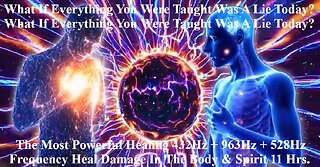 11:54:57
11:54:57
What If Everything You Were Taught Was A Lie?
5 days agoThe Most Powerful Healing 432Hz + 963Hz + 528Hz Frequency Heal Damage In The Body And Spirit
1.49K1 -
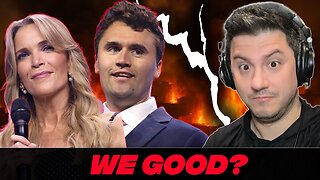 1:09:19
1:09:19
Ami's House
1 day ago $10.04 earnedWhen Defending Israel Backfires: Are We Pushing Our Last Friends Away? With Karys Rhea
167K141 -
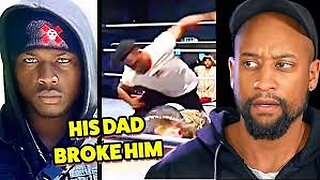 8:13
8:13
WhaddoYouMeme
19 hours ago $0.99 earnedThis Gets More Tragic By The Second
4.86K4 -
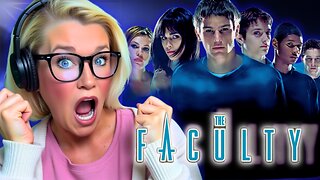 40:47
40:47
SouthernbelleReacts
2 days agoThe Faculty (1998) | Back-to-School Horror Movie Reaction | Alien Invasion in High School!
9.6K4 -
 6:58
6:58
Adam Does Movies
18 hours ago $0.40 earnedCaught Stealing - Movie Review
6.42K1 -
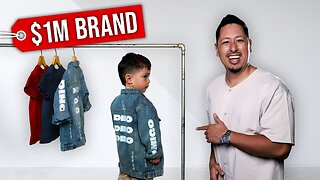 23:41
23:41
JohnXSantos
15 hours agoI Built a $1M Clothing Line for My Toddler in Just 14 Days
8.57K1 -
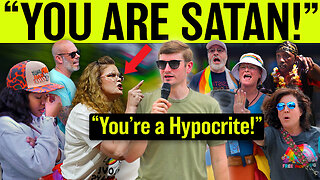 30:00
30:00
Nicholas Bowling
14 hours ago $0.67 earned30 Minutes of EXPOSING Religious Hypocrites! (They Literally Run Away)
5.71K1 -
 LIVE
LIVE
Joe Donuts Live
4 hours ago🟢 BF2042 Explosive Action: Training for Battlefield 6!
114 watching -
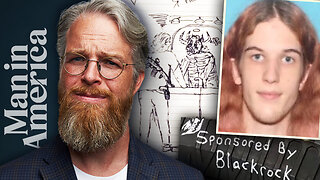 47:29
47:29
Man in America
21 hours agoIT DOESN'T ADD UP: The Trans Shooter's Story Is FULL of Holes
84.7K113 -
 LIVE
LIVE
FyrBorne
12 hours ago🔴Warzone M&K Sniping: Through the Fyr And Flames (Of SBMM)
131 watching